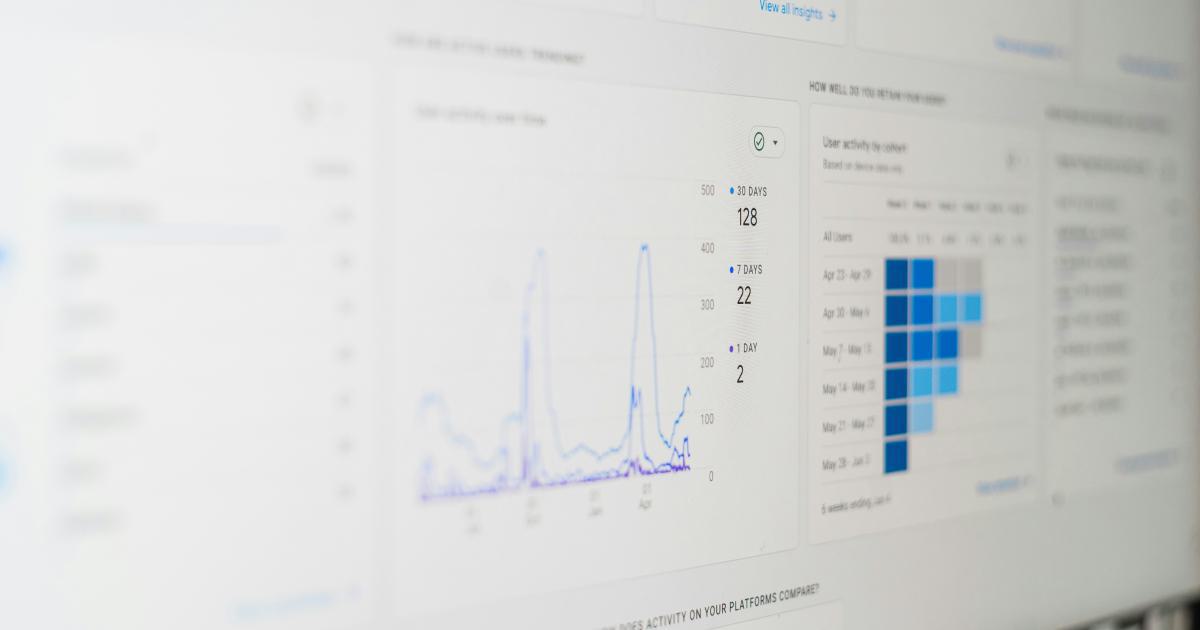5 Data-Driven Approaches to Optimize Content Marketing ROI


Introduction: Measuring and Improving Content Marketing Effectiveness
In the ever-evolving digital landscape, content marketing has become a fundamental strategy for businesses of all sizes. By creating and distributing valuable, relevant, and consistent content, organizations can attract and engage their target audience, ultimately driving conversions and revenue. However, with limited resources and increasing competition, it's crucial for marketers to optimize their content marketing efforts to maximize return on investment (ROI).

Fortunately, data-driven approaches provide a wealth of insights to help marketers fine-tune their content strategies and boost their content marketing ROI. From analyzing audience behavior to measuring the impact of content distribution, these data-driven tactics can unlock the true potential of your content marketing efforts.
In this comprehensive article, we'll explore five data-driven approaches that can help you optimize your content marketing ROI. By implementing these strategies, you'll be able to make informed decisions, allocate resources more effectively, and ultimately drive better business outcomes.
1. Analyze Audience Behavior to Personalize Content
Understanding your audience is the foundation of effective content marketing. By closely analyzing user behavior, you can gain valuable insights that inform the creation and distribution of your content, leading to higher engagement, conversions, and ROI.
Leverage Web Analytics to Uncover Content Consumption Patterns
Web analytics platforms, such as Google Analytics, provide a wealth of data on how your audience interacts with your content. By analyzing metrics like page views, bounce rates, and average time on page, you can identify the types of content that resonate most with your target audience.

For example, you might notice that long-form blog posts tend to have higher engagement rates compared to shorter articles. This could indicate that your audience prefers in-depth, informative content. Alternatively, you might find that certain topics or formats, such as video or infographics, consistently perform better than others. Armed with these insights, you can optimize your content strategy to create more of the type of content your audience craves.
Segment Your Audience for Personalized Content Experiences
Beyond analyzing overall content consumption patterns, you can take a more targeted approach by segmenting your audience based on various demographic, behavioral, and psychographic factors. This allows you to tailor your content to the specific needs and preferences of each segment, leading to higher engagement and conversions.

For instance, you might notice that your younger audience responds better to more visually-driven content, while your older audience prefers in-depth written pieces. By creating personalized content for these different segments, you can optimize your content marketing efforts and maximize the ROI for each target group.
Utilize User Feedback to Refine Your Content Strategy
Directly engaging with your audience through surveys, user interviews, and social media interactions can provide invaluable insights to refine your content strategy. By understanding your audience's pain points, preferences, and expectations, you can create content that truly resonates and drives the desired actions.

For example, you might discover that your audience is particularly interested in learning more about industry trends and best practices. Armed with this knowledge, you can create a series of in-depth, educational content pieces that address these needs, ultimately driving higher engagement and conversions.
2. Optimize Content Distribution for Maximum Visibility and Engagement
While creating high-quality content is essential, it's just the first step in your content marketing journey. Effectively distributing and promoting your content is crucial for ensuring it reaches your target audience and generates the desired impact.
Analyze Content Performance Across Different Channels
Tracking the performance of your content across various distribution channels, such as social media, email, and organic search, can provide valuable insights into the most effective channels for your target audience. By analyzing metrics like click-through rates, engagement levels, and conversion rates, you can identify the platforms that consistently deliver the best results and allocate more resources to these high-performing channels.

For instance, you might find that your audience responds better to your content on LinkedIn than on Twitter. This information can guide you to focus more of your content promotion efforts on LinkedIn, potentially leading to higher engagement, lead generation, and ultimately, a better ROI.
Optimize Content Titles and Descriptions for Search and Social
The way you present your content can greatly impact its visibility and performance. By carefully crafting compelling titles, meta descriptions, and social media captions, you can increase the chances of your content being discovered and engaged with by your target audience.

Leverage keyword research and data-driven insights to identify the most relevant and searchable terms to include in your content titles and descriptions. This can help improve your content's visibility in search engine results pages (SERPs) and increase the likelihood of your audience clicking through to your content.
Additionally, analyze the performance of your existing content titles and descriptions to identify the most effective formats and messaging. Continuously refine and optimize these elements to maximize the impact of your content distribution.
Leverage Paid Promotion Strategically
While organic content distribution is essential, strategic use of paid promotion can further amplify the reach and impact of your content. By leveraging paid advertising on social media, search engines, or industry-specific platforms, you can target your content to specific audience segments and measure the resulting engagement, conversions, and ROI.

Analyze the performance of your paid content promotion efforts, including metrics like cost-per-click, cost-per-lead, and return on ad spend (ROAS). Use these insights to refine your targeting, ad creative, and budget allocation, ensuring that your paid content promotion delivers a positive ROI.
3. Measure and Optimize Content Performance
Effective content marketing requires a deep understanding of how your content is performing and its impact on your overall business goals. By implementing a comprehensive content performance measurement framework, you can make data-driven decisions to continuously improve your content marketing strategy and maximize ROI.
Define and Track Relevant Key Performance Indicators (KPIs)
Identify the key performance indicators (KPIs) that align with your content marketing objectives and business goals. These KPIs may include metrics such as website traffic, engagement (e.g., time on page, bounce rate), lead generation, sales, and customer lifetime value.

Regularly track and analyze these KPIs to gain insights into the effectiveness of your content. This will help you identify high-performing content, understand user behavior, and make informed decisions about future content creation and distribution.
Conduct A/B Testing to Optimize Content Performance
A/B testing, also known as split testing, is a powerful tool for optimizing content performance. By creating two variations of a piece of content (e.g., different headlines, images, or calls-to-action) and measuring their relative performance, you can determine which version resonates better with your audience.

Implement A/B testing across various aspects of your content, such as titles, CTAs, and content formats. Analyze the results to identify the elements that drive the highest engagement, conversions, and ultimately, ROI. Continuously refine and test your content to ensure it is delivering the desired outcomes.
Leverage Content Attribution Models to Measure Impact
Understanding the impact of your content marketing efforts on your overall business performance can be challenging, as the customer journey often involves multiple touchpoints. Content attribution models can help you track the contribution of your content at different stages of the customer journey, providing a more holistic view of its impact.

Explore various attribution models, such as first-touch, last-touch, or multi-touch attribution, to determine the most effective way to measure the impact of your content. This can help you allocate resources more effectively, prioritize high-performing content, and demonstrate the true value of your content marketing efforts to stakeholders.
4. Leverage Competitor and Industry Benchmarking
Analyzing your competition and industry benchmarks can provide valuable insights to help you optimize your content marketing ROI. By understanding how your content performance compares to your peers, you can identify areas for improvement and make more informed decisions about your content strategy.
Monitor Competitor Content Performance
Keep a close eye on the content marketing efforts of your key competitors. Analyze the types of content they are creating, the distribution channels they are using, and the performance metrics they are achieving. This can help you identify content gaps, opportunities to differentiate your approach, and best practices to emulate.

Use tools like content analysis platforms, social media listening, and search engine monitoring to gather data on your competitors' content performance. Look for insights such as the most popular content topics, engagement rates, and conversion metrics. Leverage these findings to fine-tune your own content strategy and outperform your competition.
Benchmark Against Industry Standards and Trends
In addition to monitoring your competitors, it's essential to stay up-to-date with industry-wide content marketing trends and benchmarks. This can help you understand where your content marketing efforts stand relative to your peers and identify areas for improvement.

Refer to industry reports, surveys, and expert insights to gather data on content marketing metrics, such as average engagement rates, conversion rates, and content distribution channel performance. Compare your own results to these industry standards, and use the insights to guide your content optimization efforts.
By benchmarking your content marketing performance against your competition and industry standards, you can make more informed decisions, identify growth opportunities, and ultimately optimize your content marketing ROI.
5. Integrate Content and Demand Generation Strategies
To truly maximize the ROI of your content marketing efforts, it's crucial to align your content strategy with your overall demand generation initiatives. By integrating these two fundamental marketing components, you can create a cohesive and effective ecosystem that drives customer acquisition, retention, and revenue growth.
Leverage Content to Support the Buyer's Journey
Understand the different stages of the buyer's journey (awareness, consideration, and decision) and create content that addresses the needs and pain points of your target audience at each stage. This will help you nurture leads and guide them towards conversion.

At the awareness stage, focus on creating educational and informative content that helps your audience understand their problems and the available solutions. In the consideration stage, provide more in-depth, comparative content that assists your leads in evaluating their options. Finally, in the decision stage, offer content that helps your leads make the final purchase decision, such as case studies, product demos, or free trials.
By aligning your content with the buyer's journey, you can effectively support your demand generation efforts and guide your leads towards conversion, ultimately improving your content marketing ROI.
Integrate Content and Lead Nurturing Campaigns
Seamlessly integrate your content marketing and lead nurturing strategies to create a cohesive customer experience. Use your content to engage and nurture leads, guiding them through the sales funnel and driving them towards conversion.

Leverage marketing automation tools to deliver personalized content to your leads based on their interactions, behaviors, and stage in the buyer's journey. This can include email campaigns, retargeting ads, and personalized content recommendations on your website.
By aligning your content and lead nurturing efforts, you can improve lead quality, increase conversion rates, and demonstrate the tangible impact of your content marketing on your overall business performance.
Measure the Impact of Content on Revenue and ROI
Ultimately, the true measure of your content marketing ROI lies in its ability to drive revenue and business growth. By closely tracking the impact of your content on key revenue-related metrics, you can demonstrate the value of your content marketing efforts to stakeholders and justify ongoing investment.

Analyze metrics such as leads generated, qualified opportunities, and closed deals that can be directly attributed to your content marketing efforts. Additionally, calculate the lifetime value of customers acquired through your content marketing channels to understand the long-term impact on your business.
By integrating your content and demand generation strategies and measuring their impact on revenue and ROI, you can optimize your content marketing efforts to deliver tangible business results and maximize your overall return on investment.
Conclusion: Embracing Data-Driven Content Marketing for Sustainable Growth
In today's competitive digital landscape, leveraging data-driven approaches is essential for optimizing your content marketing ROI. By implementing the strategies outlined in this article, you can gain a deeper understanding of your audience, streamline your content distribution, measure performance effectively, benchmark against industry standards, and integrate your content and demand generation efforts.

Remember, the journey to content marketing optimization is an ongoing process. Continuously analyze your data, experiment with new tactics, and refine your approach to ensure your content marketing efforts continue to drive sustainable business growth. By embracing a data-driven mindset, you can unlock the true potential of your content marketing and achieve remarkable results.